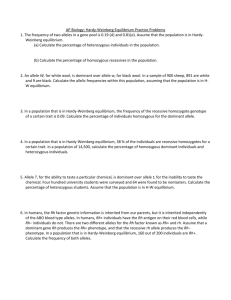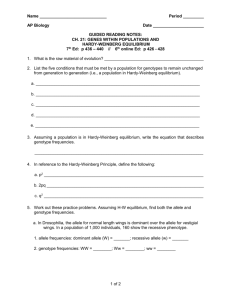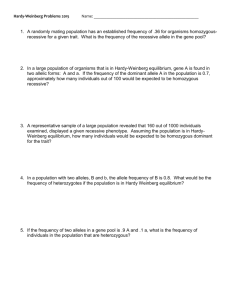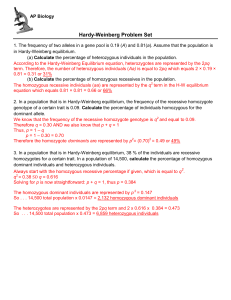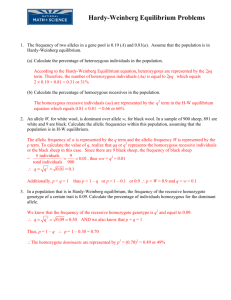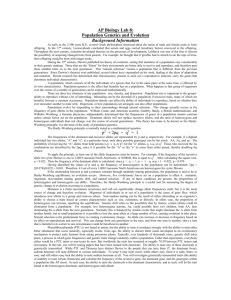Additional Population Genetics Problems
advertisement
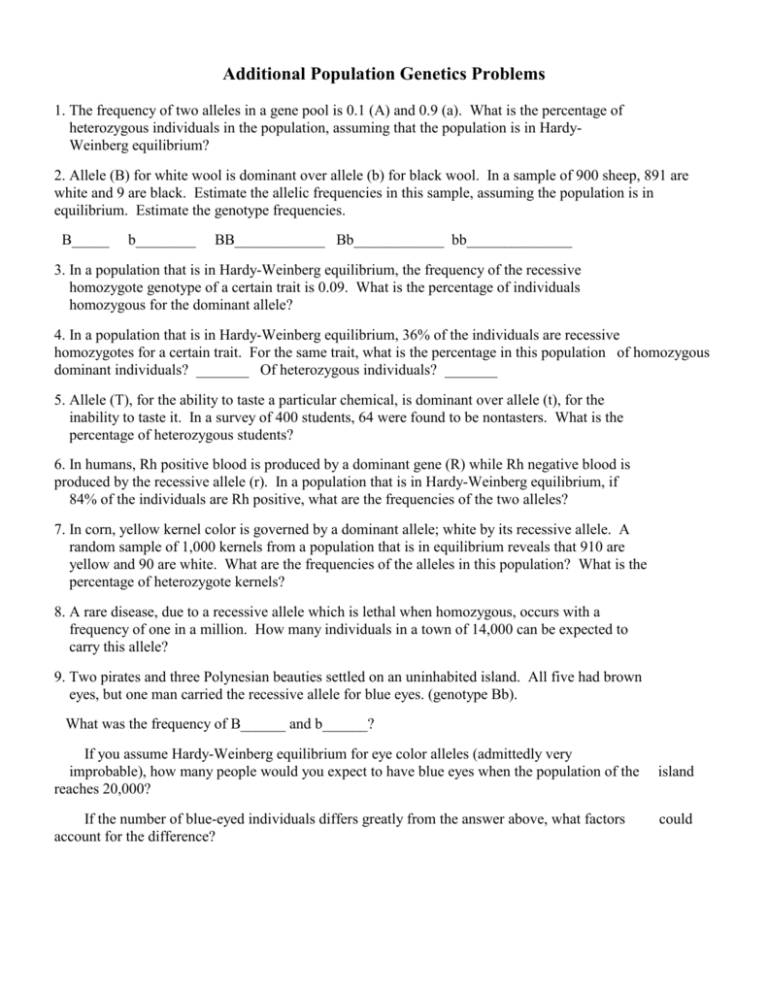
Additional Population Genetics Problems 1. The frequency of two alleles in a gene pool is 0.1 (A) and 0.9 (a). What is the percentage of heterozygous individuals in the population, assuming that the population is in HardyWeinberg equilibrium? 2. Allele (B) for white wool is dominant over allele (b) for black wool. In a sample of 900 sheep, 891 are white and 9 are black. Estimate the allelic frequencies in this sample, assuming the population is in equilibrium. Estimate the genotype frequencies. B_____ b________ BB____________ Bb____________ bb______________ 3. In a population that is in Hardy-Weinberg equilibrium, the frequency of the recessive homozygote genotype of a certain trait is 0.09. What is the percentage of individuals homozygous for the dominant allele? 4. In a population that is in Hardy-Weinberg equilibrium, 36% of the individuals are recessive homozygotes for a certain trait. For the same trait, what is the percentage in this population of homozygous dominant individuals? _______ Of heterozygous individuals? _______ 5. Allele (T), for the ability to taste a particular chemical, is dominant over allele (t), for the inability to taste it. In a survey of 400 students, 64 were found to be nontasters. What is the percentage of heterozygous students? 6. In humans, Rh positive blood is produced by a dominant gene (R) while Rh negative blood is produced by the recessive allele (r). In a population that is in Hardy-Weinberg equilibrium, if 84% of the individuals are Rh positive, what are the frequencies of the two alleles? 7. In corn, yellow kernel color is governed by a dominant allele; white by its recessive allele. A random sample of 1,000 kernels from a population that is in equilibrium reveals that 910 are yellow and 90 are white. What are the frequencies of the alleles in this population? What is the percentage of heterozygote kernels? 8. A rare disease, due to a recessive allele which is lethal when homozygous, occurs with a frequency of one in a million. How many individuals in a town of 14,000 can be expected to carry this allele? 9. Two pirates and three Polynesian beauties settled on an uninhabited island. All five had brown eyes, but one man carried the recessive allele for blue eyes. (genotype Bb). What was the frequency of B______ and b______? If you assume Hardy-Weinberg equilibrium for eye color alleles (admittedly very improbable), how many people would you expect to have blue eyes when the population of the reaches 20,000? If the number of blue-eyed individuals differs greatly from the answer above, what factors account for the difference? island could






